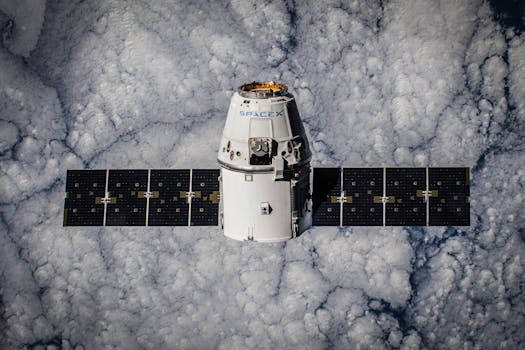The New Frontier: Exploring the Latest Trends in Satellite Communication
The new frontier of satellite communication is rapidly evolving, with advancements in technology and innovative applications. This article explores the latest trends in satellite communication, including the rise of satellite constellations, the growth of satellite-based broadband, and the increasing importance of satellite communication in the era of 5G.

The New Frontier: Exploring the Latest Trends in Satellite Communication
Satellite communication is a rapidly evolving field, with new technologies and innovative applications emerging all the time. The New Frontier: Exploring the Latest Trends in Satellite Communication is a topic that has garnered significant attention in recent years, and for good reason. With the increasing demand for global connectivity, satellite communication has become an essential component of modern telecommunications infrastructure. In this article, we will delve into the latest trends in satellite communication, including the rise of satellite constellations, the growth of satellite-based broadband, and the increasing importance of satellite communication in the era of 5G.
Satellite communication has been around for decades, but it has only been in recent years that the technology has advanced to the point where it can provide high-speed, low-latency connections to remote and underserved areas. The development of new satellite constellations, such as those launched by SpaceX and OneWeb, has made it possible to provide global coverage and connectivity to even the most remote regions. These constellations are made up of hundreds or even thousands of small satellites that work together to provide a network of coverage, allowing for seamless communication and data transfer.
The Rise of Satellite Constellations
The rise of satellite constellations is one of the most significant trends in satellite communication today. These constellations are designed to provide global coverage and connectivity, and they have the potential to revolutionize the way we communicate and access data. With the ability to provide high-speed, low-latency connections to remote and underserved areas, satellite constellations are poised to play a major role in the development of global telecommunications infrastructure.
One of the key benefits of satellite constellations is their ability to provide connectivity to areas where traditional terrestrial infrastructure is lacking. In many parts of the world, the cost and logistics of building out terrestrial infrastructure make it impractical or impossible. Satellite constellations offer a solution to this problem, providing a way to bring connectivity to these areas without the need for costly and time-consuming infrastructure builds.
The Growth of Satellite-Based Broadband
The growth of satellite-based broadband is another major trend in satellite communication. With the increasing demand for high-speed internet access, satellite-based broadband has become an attractive option for those in remote or underserved areas. Satellite-based broadband offers a range of benefits, including high-speed connections, low latency, and global coverage.
Satellite-based broadband is particularly well-suited for areas where traditional terrestrial infrastructure is lacking. In these areas, satellite-based broadband can provide a cost-effective and efficient way to bring high-speed internet access to homes, businesses, and communities. With the ability to provide speeds of up to 100 Mbps or more, satellite-based broadband is capable of supporting a range of applications, from basic internet browsing to more demanding uses such as video streaming and online gaming.
The Increasing Importance of Satellite Communication in the Era of 5G
The increasing importance of satellite communication in the era of 5G is a trend that is gaining significant attention. As the world becomes increasingly dependent on mobile devices and wireless connectivity, the need for reliable and high-speed communication networks has never been greater. Satellite communication is poised to play a major role in the development of 5G networks, providing a way to extend coverage and capacity to areas where traditional terrestrial infrastructure is lacking.
Satellite communication is particularly well-suited for 5G applications, offering a range of benefits including high-speed connections, low latency, and global coverage. With the ability to provide speeds of up to 100 Mbps or more, satellite communication is capable of supporting a range of 5G applications, from enhanced mobile broadband to mission-critical communications.
In conclusion, the new frontier of satellite communication is rapidly evolving, with advancements in technology and innovative applications emerging all the time. The rise of satellite constellations, the growth of satellite-based broadband, and the increasing importance of satellite communication in the era of 5G are just a few of the trends that are shaping the future of satellite communication. As the demand for global connectivity continues to grow, satellite communication is poised to play an increasingly important role in the development of modern telecommunications infrastructure.




